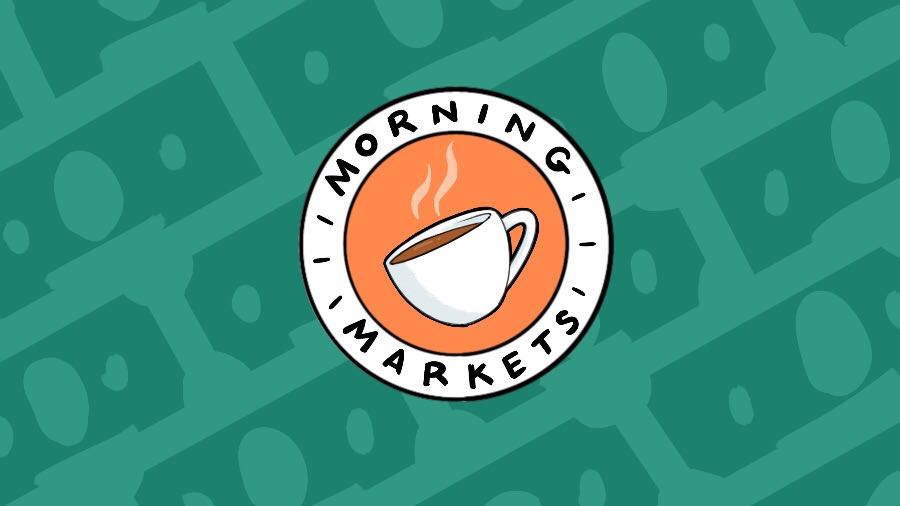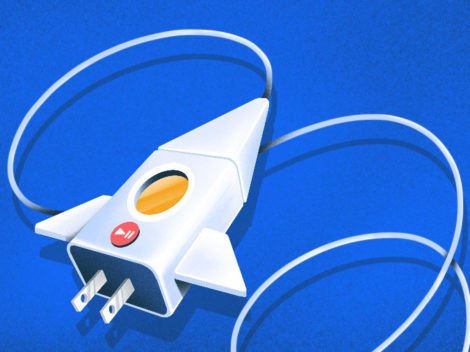Morning Markets: Continuing our coverage of the impact of startups on incumbents, let’s dig into what GrubHub had to say yesterday about its market, and competition.
Subscribe to the Crunchbase Daily
Yesterday as part of its third-quarter earnings report, GrubHub’s shareholder letter described how the online food delivery giant views its market. And its competition.
The letter provides interesting context for the on-demand players, especially those working with food delivery. It’s a space that has attracted oceans of capital (DoorDash, Postmates, etc.) and investment from other sorts of on-demand companies, like Uber. The scale of the bets placed in the space by venture investors, the Vision Fund, and companies that venture capitalists previously funded is huge. It’s in the tens of billions by now.
And so, when GrubHub warns that growth in its market could be set to slow dramatically, it’s worth paying attention to. Let’s explore.
Warnings
GrubHub is being challenged by private companies who can lose lots of money in the short-term as they have raised ample capital from investors more interested in growth than profits. GrubHub, in contrast, is profitable and has to report its earnings each quarter.
The public company has noticed the entrant of high-growth on-demand companies, as we’d expect. That said, how it describes the entrance of, we presume, DoorDash is interesting (Bolding: Crunchbase News):
Over the last few years, two significant changes on the restaurant supply side temporarily accelerated overall industry growth. First, a new entrant leveraging a national, scaled third-party transportation network brought delivery capabilities to tens of thousands of independently owned and enterprise restaurants that couldn’t or didn’t choose to provide their own delivery services. Second, listing restaurants on platforms without any partnership allowed other players to expand restaurant inventory rapidly. Both of these changes opened up new and unique pockets of restaurant supply and resulted in significant growth in both orders and new diners as previously untapped geographies and additional restaurants in all geographies were now immediately accessible online.
Regarding its own new user growth, GrubHub said that “retention of these newer diners was good” but that their “ordering frequency” wasn’t developing over time to be as strong as seen in “earlier cohorts.” The company then got into the weeds, explaining how it saw the market changing in the wake of the new competition and a changed competitive landscape (Bolding: Crunchbase News):
We spent a fair amount of time digging into the causes of these dynamics. What we concluded is that the supply innovations in online takeout have been played out and annual growth is slowing and returning to a more normal longer-term state which we believe will settle in the low double digits, except that there are multiple players all competing for the same new diners and order growth.
GrubHub next described why some diners weren’t performing as expected. The company wrote that ” online diners are becoming more promiscuous,” using a number of platforms for delivery instead of just one, for example. “Easy wins in the market are disappearing a little more quickly than we thought,” GrubHub continued.
The warnings didn’t stop there, however. GrubHub also took shots at companies looking to find efficiency in delivery scale, writing that (Bolding: Crunchbase News):
A common fallacy in this business is that an avalanche of volume, food or otherwise, will drive logistics costs down materially. Bottom line is that you need to pay someone enough money to drive to the restaurant, pick up food and drive it to a diner. That takes time and drivers need to be appropriately paid for their time or they will find another opportunity. At some point, delivery drones and robots may reduce the cost of fulfillment, but it will be a long time before the capital costs and ongoing operating expenses are less than the cost of paying someone for 30-45 minutes of their time. Delivery/logistics is valuable to us because it increases potential restaurant inventory and order volume, not because it improves per order economics.
Firey stuff, frankly.
Now, GrubHub has a biased view of the market, its place in it, and the dynamics of the space in which it competes. That much is clear. But the company is also trying to explain its worldview to its shareholders, so we’re not just reading some useless hype; this is how the company describes itself to its owners.
Let’s bring this back to startups.
Growth
DoorDash and other prime GrubHub competitors are valued on revenue growth instead of profit. This means that they don’t have to make money in the short-term, but also means that if their growth rate slows, their value can quickly fall. If overall market growth slows, it could crimp DoorDash’s ability to continue the sort of growth that its backers covet.
The news doesn’t really get better from there. GrubHub’s notes concerning easy wins becoming scarce on the ground implies rising customer acquisition costs (CAC); harder wins cost more. This abuts the fact that diners’ budgets aren’t infinite. GrubHub noted in its letter that “the average diner in the United States will not consistently pay over $25 in total cost for a quick service restaurant cheeseburger meal.” So, rising CAC could cut into margins if order size can’t scale further. (SaaS fans can think of the situation as something akin to falling LTV compared to CAC.)
Summing, we could see what makes some on-demand companies attractive become less attractive over time. GrubHub is right in that most customers won’t use the service if they repeatedly have to pay high costs for a regular-quality meal. Also, none of this takes into account a possibly failing macro-climate. Add that in and things become worrisome.
Investors agree. Shares of GrubHub were off 37 percent this morning.
Illustration: Dom Guzman.

Stay up to date with recent funding rounds, acquisitions, and more with the Crunchbase Daily.






![Illustration of stopwatch - AI [Dom Guzman]](https://news.crunchbase.com/wp-content/uploads/Halftime-AI-1-300x168.jpg)


67.1K Followers